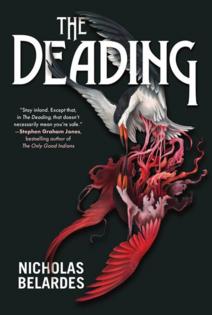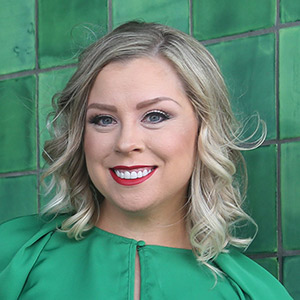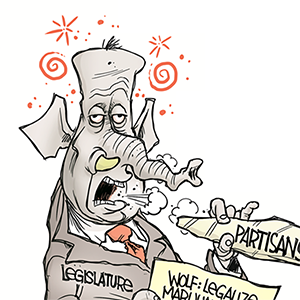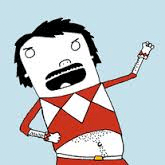Ecological destruction along California's coast fuels horror in 'The Deading'
Published in Books News
Sea snails offer the first clue that something is going terribly wrong in the fictional town of Baywood, California. But not they’re your average sea snails — these attack whatever they cling to. Then, a mysterious infection creeps into the wildlife, leaving nothing safe — least of all the townspeople.
Nicholas Belardes of San Luis Obispo drew from his experiences growing up in California’s rural Central Coast to draft his debut novel “The Deading” (Erewhon Books), an apocalyptic vision of how ecological degradation fuels a society’s collapse. The New York Times Book Review raved: “‘The Deading’ is a dystopian eco-horror that perfectly balances social critique, lyricism and ghastliness. It’s a claustrophobic mosaic of a novel and an outstanding debut.”
Belardes, who is an occasional contributor to the Southern California News Group, answered questions via email about the ideas and experiences that informed his novel. This conversation has been edited for clarity and length:
Q. Birds play a central role in “The Deading.” You are an avid birder yourself, so did the idea for this novel come out of your experiences observing the natural world?
Belardes: You never know where the germ for a novel might come from. I’d read a bunch of Jeff VanderMeer novels and thought we were due a West Coast version of “Annihilation.” So, right away I knew I wanted to write eco-horror, something about nature, something unsettling. I didn’t know there would be birds.
Also, I knew I wanted to pen a story with the feel of an H.G. Wells’ something-comes-from-outer-space feel in its backstory. Something that rises from the deep, transforms humanity. I got to thinking: What if that something unknown was in sympatico with the ocean? And we all know that the oceans are a mess – ocean warming, climate change, mass bird and whale die-offs, toxicity from ocean dumping grounds, coastal nuclear facilities, sand dunes full of microplastics and metals because of “off-road recreation,” and birds migrating and breeding in that mess while government entities look the other way and collect recreation fees. It was the perfect stew for horror, my backyard, the California Central Coast.
That led to my own definition of eco-horror: the literature of confronting the damage we’ve done to the natural world.
With all of that said, “The Deading” does center around my bird studies. There’s power in observing nature. Stories we can tell about behaviors: hunting, migrating, surviving, dying. Bird lives play out in front of us daily. And sometimes, well, it can be a monster story. My first birding experiences included a swampy grove of trees and scrub in Los Osos, California called Pecho Road Willows. I remember being hunched on a board in the mud and cold, waiting for some rail or warbler to come creeping out. It was then realized I was the monster to them, creeping in on their turf!
I’d already written a third of the novel pre-pandemic. If I hadn’t started birdwatching around then, the novel’s shape would have been completely different both in structure and character types. Birders like Blas and Ingram, and the naturalist Kumi Sato, all give the novel such heart. I would have lost that centering, and part of the story’s politics and community that we get through their eyes.
Q. A Chicano teenager named Blas Enriquez is one of the central characters in the novel. In the book’s foreword you say, “When you can’t see yourself in the future, then someone/something has erased something about you. This is why we need more brown characters and sci-fi, fantasy, and horror… .” Can you talk about how important representation is to you as a writer, and as a person of color?
Belardes: I’m Chicano, but also dual ethnic: Mexican American father, White mother. Growing up, I read everything from “Huckleberry Finn” to “Dune,” “The Lord of the Rings,” “The Catcher in the Rye,” to “Jane Eyre.” Do brown kids see themselves in those stories? I didn’t. I had my own issues being dual ethnic. Thing is, we have to ask ourselves, what is imagination supposed to do for us? Are we supposed to feel abandoned? Excluded? I vote: included. We need stories that confront our very place in America. We’ve got to shove our square-peg selves into round holes even if we’re not wanted.
“The Deading” reveals birding’s own collective amnesia and often collective dismissiveness in a similar way. Blas, an angry young rasquache (poor)birder in the story has choice words for John James Audubon of yesteryear, and that’s because he knows how left out he would be in that antiquated, racist world of powerful White male ornithologists. Blas can see through the veil because those dismissive, racist remnants still exist: the shaming, the way he’s ostracized, the way he’s dismissed and ignored.
Blas’s anger and grief are my critique of birding from a Brown teenage birder’s point of view, because that is the community being left out. And that’s the community who should be angriest. So, Blas gives the novel its political bent, a “way in” so to speak, a way to talk about ethnicity, science, people, and community. He takes aim at any grumpy old White birdwatcher who has literally either ignored any conversation of ethnicity, or stated this equivalent: “Ethnicity doesn’t matter in birding.”
Ornithology similarly has to expand its thinking. I mean, we all need to care about birds, but not to the extent where we cling to ancestor worship through bird names like Townsend’s Warbler. John Kirk Townsend exhumed Indigenous remains to try to prove some kind of Indian inferiority. That racist legacy is like some kind of sticky goo, and Blas reminds us of that truth.
Q. What attracts you to the horror genre? What does it allow you to explore as a writer?
Belardes: “The Deading” has always been three-fourths horror, one part sci-fi. I think both allow access to a part of ourselves and our lives that we can’t talk about in any other way and get away with it. It’s that burning magnifying glass. We see everything bigger, brighter, and squirming. And it’s almost as if we’re holding that glass. I can’t talk all day about oyster farms because you’d probably get bored. Throw it into an eco-horror, add some supernatural weirdness, well then, people will pay close attention. They want to see what happens. It’s all very strangely entertaining how speculative fiction allows this elevation of danger.
And we love it as consumers. Remember that scene in “Gladiator” where Maximus slices, dices, and beheads his opponents and all these people in the stands can’t look away from the grotesquerie? I mean, they paid good money to fulfill their bloodlust. That’s what horror does. Think about it. What does Maximus say in that moment after he kills those five or six fighters? Or maybe it’s Ridley Scott saying this to us, the viewer, because he wants to mock our need to see this gruesome, dangerous world from a safe space. And so Maximus yells, “Are you not entertained?” And right then we have to admit we are complicit in all of it. And horror does that, puts us right in the middle of our terrors, and we are part of them, and can’t escape for the duration of the novel, but really, we’re in a safe place . . . or are we?
Q. Just have to tell you, I will never look at oysters the same way again. Kind of like pet cemeteries after I read Stephen King. So…thanks?
Belardes: Oysters farmed outside their natural habitat steal nutrients from a bay’s natural ecosystem. They damage estuaries in ways we haven’t even considered. Horror is a device used to show you that one wrong too many and everything can go topsy-turvy. The ocean might rise against us. A kind of supernatural revenge plays out in “The Deading.” Citizens become trapped, have no clue what to do, except rely on their own supernatural beliefs, the kind that have been culturally accepted, and then those get warped. We become even more monstrous. I imagine both nature and people have their breaking points, and that’s kind of the symbol that the oyster farm is in the story.
And, if not oysters, it’s always something. We’re doing it to ourselves, and I think that’s part of the message of “The Deading.” This can be real: Thousands of toxic barrels discovered off the Southland coast, anyone? Gray whales washing ashore? Seals and sea lions dying from toxicity. Murres and pelicans dying in droves? An eco-horror is playing out right now, while we avert our eyes and coo at every ocean sunset.
Q. This is your first novel. What did the experience teach you, and are you working on something else right now too? Equally as scary?
Belardes: Hindsight is everything. I should have focused on my career sooner, rather than doing so much ghostwriting for famous folks. And that’s because things can happen for me, you, all of us, if we just stay the course.
Just finished revisions to “Ten Sleep,” a novel of terror in the high country. Place is as much a character as people and animals in a cattle drive tale that I wound together into one big scare. This isn’t Jack Palance as Curly in “City Slickers” telling you how the secret to life is “one thing. Just one thing.” In this case, it’s a lot of terrible things. And maybe those terrors are tied to nature and sacrifice and how you can’t control the land, no matter how hard you try.
©2024 MediaNews Group, Inc. Visit ocregister.com. Distributed by Tribune Content Agency, LLC.













Comments